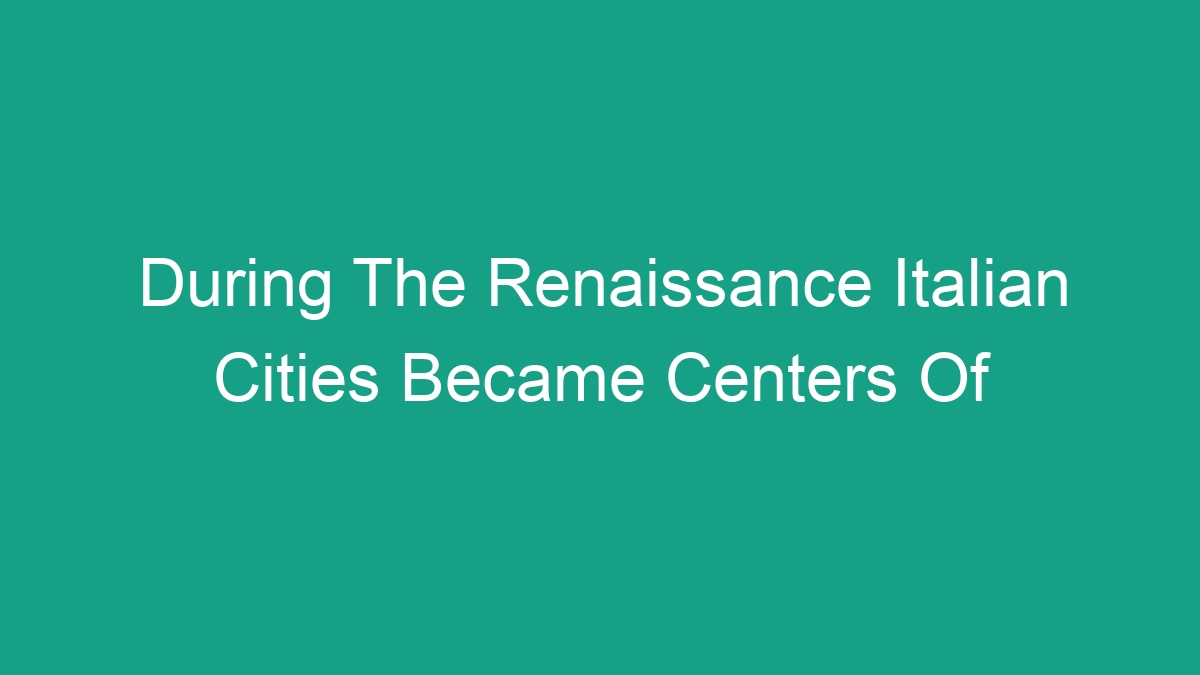
The Renaissance period, which began in Italy in the 14th century, saw a rebirth of art, culture, and intellectual pursuits. Italian cities played a crucial role in this significant period of history, becoming centers of various developments and innovations. This article will explore how Italian cities became hubs for artistic, cultural, and intellectual activities during the Renaissance.
Trade and Commerce
During the Renaissance, Italian cities such as Florence, Venice, and Genoa became thriving centers of trade and commerce. The geographical location of these cities made them ideal hubs for trade between the East and the West. The influx of wealth from trade enabled these cities to become patrons of the arts and support the development of cultural and intellectual pursuits.
– Florence, Venice, and Genoa were key players in the Mediterranean trade routes
– The wealth generated from trade allowed for investment in the arts and education
Patronage of the Arts
Italian cities during the Renaissance were characterized by the patronage of wealthy and influential families who supported artists, architects, and scholars. These patrons commissioned works of art, funded the construction of buildings, and supported intellectual endeavors.
– The Medici family in Florence was one of the most influential patrons of the arts
– Artists such as Leonardo da Vinci, Michelangelo, and Raphael were supported by wealthy patrons in Italian cities
Artistic and Cultural Innovation
Italian cities during the Renaissance were at the forefront of artistic and cultural innovation. The period saw the emergence of new artistic techniques, styles, and subject matters, which revolutionized the art world.
– The development of perspective in painting, as seen in the works of artists such as Masaccio
– The flourishing of literature, with writers such as Dante and Petrarch making significant contributions to Italian culture
Humanism and Intellectual Pursuits
The Renaissance was a period that saw a renewed interest in the classical texts and a focus on humanism. Italian cities became centers for the study of classical literature, philosophy, and humanist thought.
– The founding of academies and intellectual societies in Italian cities
– The translation and preservation of classical texts, contributing to the revival of classical knowledge
Architectural and Urban Development
Italian cities during the Renaissance underwent significant architectural and urban development. The construction of grand buildings, palaces, and cathedrals transformed the urban landscape and reflected the wealth and power of Italian city-states.
– The construction of the Florence Cathedral and the Basilica of St. Peter’s in Rome
– The design and development of urban spaces, such as the Piazza del Campo in Siena
Scientific and Technological Advancements
Italian cities during the Renaissance were also centers of scientific and technological advancements. Scholars and inventors made significant contributions to fields such as astronomy, engineering, and medicine.
– The work of Leonardo da Vinci in the fields of anatomy, engineering, and invention
– The development of new scientific instruments and technologies, such as the telescope and the printing press
In conclusion, Italian cities played a pivotal role in the cultural, artistic, and intellectual developments of the Renaissance. The patronage of the arts, the flourishing of humanism, and the advancements in science and technology made Italian cities hubs of innovation and creativity during this remarkable period in history.
By understanding the importance of Italian cities during the Renaissance, we can appreciate the legacy of their contributions to art, culture, and human thought that continue to influence the world today.



